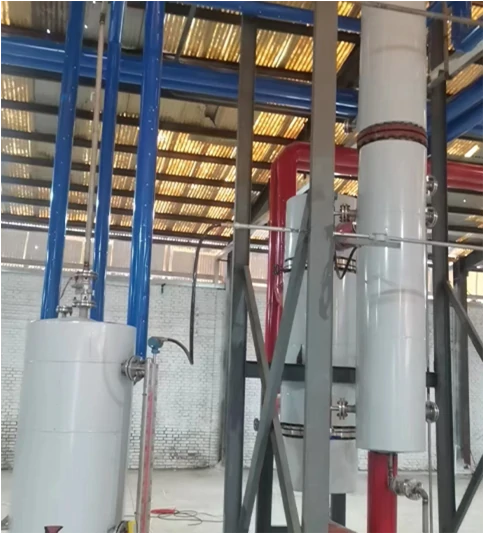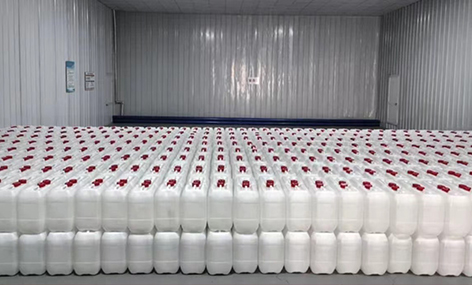
1 月 . 26, 2025 07:59 Back to list
Food grade glacial acetic acid
Glacial Acetic Acid Essential Safety Precautions for Optimal Handling
Spill Management Swift and Effective Response Protocol Preparedness is a cornerstone of chemical safety. Having an established, effective spill management plan ensures quick response to accidental releases, minimizing harm to personnel and equipment. Spill kits specifically designed for acid spills should be readily accessible. These kits usually contain neutralizing agents, absorbent materials, and protective gear. Prompt communication with trained personnel in the event of a spill is crucial. Staff should be trained regularly on spill response procedures, emphasizing the importance of containing and neutralizing the spill using appropriate materials before cleanup. Storage Securing Stability and Safety Storing glacial acetic acid correctly is vital in preventing accidental exposure and degradation. It should be kept in a cool, incombustible area away from direct sunlight and heat sources. Containers must be robust, clearly labeled, and resistant to corrosion. Acetic acid should also be segregated from incompatible substances like strong oxidizing agents, bases, and metals to prevent hazardous reactions. Regular inspections of storage areas and containers can prevent leaks and accidental exposure. Implementing a first-in, first-out (FIFO) policy can also help ensure that the oldest stock is used first, reducing the likelihood of container degradation over time. Training and Education Empowering Safe Practices Continuous education and training of personnel are fundamental pillars in the armory against chemical accidents. Comprehensive training programs should be instituted, encompassing everything from the theoretical understanding of glacial acetic acid to practical handling and emergency response procedures. Incorporating regular drills can enhance preparedness and reduce reaction times in emergencies. Additionally, keeping abreast of updated safety regulations and industry best practices will ensure that safety measures are compliant and effective. In summation, creating a safe environment for handling glacial acetic acid is not a solitary endeavor, but a composite of informed equipment choices, effective planning, and rigorous education. By adhering to these safety precautions, businesses can protect their workforce, maintain operational efficiency, and uphold a reputation as a responsible and trustworthy entity in the chemical industry.


Spill Management Swift and Effective Response Protocol Preparedness is a cornerstone of chemical safety. Having an established, effective spill management plan ensures quick response to accidental releases, minimizing harm to personnel and equipment. Spill kits specifically designed for acid spills should be readily accessible. These kits usually contain neutralizing agents, absorbent materials, and protective gear. Prompt communication with trained personnel in the event of a spill is crucial. Staff should be trained regularly on spill response procedures, emphasizing the importance of containing and neutralizing the spill using appropriate materials before cleanup. Storage Securing Stability and Safety Storing glacial acetic acid correctly is vital in preventing accidental exposure and degradation. It should be kept in a cool, incombustible area away from direct sunlight and heat sources. Containers must be robust, clearly labeled, and resistant to corrosion. Acetic acid should also be segregated from incompatible substances like strong oxidizing agents, bases, and metals to prevent hazardous reactions. Regular inspections of storage areas and containers can prevent leaks and accidental exposure. Implementing a first-in, first-out (FIFO) policy can also help ensure that the oldest stock is used first, reducing the likelihood of container degradation over time. Training and Education Empowering Safe Practices Continuous education and training of personnel are fundamental pillars in the armory against chemical accidents. Comprehensive training programs should be instituted, encompassing everything from the theoretical understanding of glacial acetic acid to practical handling and emergency response procedures. Incorporating regular drills can enhance preparedness and reduce reaction times in emergencies. Additionally, keeping abreast of updated safety regulations and industry best practices will ensure that safety measures are compliant and effective. In summation, creating a safe environment for handling glacial acetic acid is not a solitary endeavor, but a composite of informed equipment choices, effective planning, and rigorous education. By adhering to these safety precautions, businesses can protect their workforce, maintain operational efficiency, and uphold a reputation as a responsible and trustworthy entity in the chemical industry.
